ForWheels
Where learning meets innovation on the road to mastery
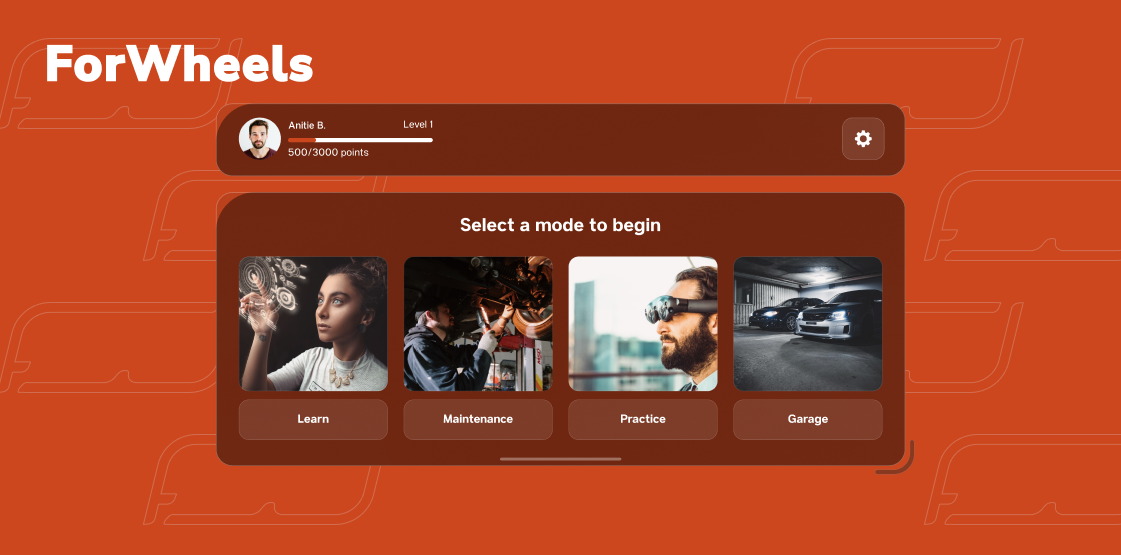
Overview
ForWheels is revolutionizing automotive education by bringing the power of augmented reality to mechanics training and car maintenance. Our platform transforms the way people learn about and interact with cars, making complex automotive concepts accessible and engaging for everyone.
The Challenge
Traditional automotive education often involves expensive equipment, limited hands-on experience, and safety risks. We needed to create a solution that makes learning accessible while maintaining the practical aspects of automotive training.
The Solution
By leveraging augmented reality and interactive 3D models, ForWheels creates an immersive learning environment where users can safely explore, practice, and master automotive skills without the need for physical vehicles or tools.
Market Research
Our extensive market research revealed significant gaps in automotive education and training, particularly in accessibility and safety. We identified key opportunities to innovate in this space.
Education Gap
Traditional automotive education is often expensive and inaccessible to many aspiring mechanics.
Safety Concerns
Hands-on training can be dangerous for beginners without proper supervision and equipment.
Digital Transformation
Growing demand for interactive, technology-driven learning experiences in automotive education.

Key Features
Learn Mode
Interactive lessons with 3D models and AR visualization help users understand automotive concepts through immersive experiences.
Practice Mode
Virtual hands-on experience allows users to practice maintenance and repair procedures in a safe, controlled environment.
Garage Mode
A virtual garage where users can explore different car models, components, and systems in detail using AR technology.
Research Findings
Our research revealed significant gaps in automotive knowledge and industry challenges that ForWheels aims to address through innovative AR-based learning solutions.
Cars Can Be Confusing
are unaware of how to pump their tyres
don't know how to check tyre tread depth
don't know how to check their engine oil levels
Repair Shops Are Struggling
can't find time for hands-on technician training
can't keep up with advances in vehicle technology
Industry Investment
7.6% of annual fiscal revenue in 2020
R&D investment in 2021
User Research

After identifying the business's needs through market research, we conducted user interviews with individuals aligned with the product's goals. This helped us understand their training needs and the challenges they face.
With two objectives in mind. The first being to gain a deeper understanding of preferred learning methods, and the second was to learn about prevalent habits pertaining to vehicle ownership and maintenance.
Target audience
- Automotive Engineers
- Mechanics and Maintenance Professionals
- Car Owners
- learning Specialists/engineering Student
Empathy mapping
To effectively organize and analyze the wealth of information gathered from the interview, we employed the say-think-feel-do framework, allowing us to not only categorize their responses but also to capture the emotions behind their pain points.
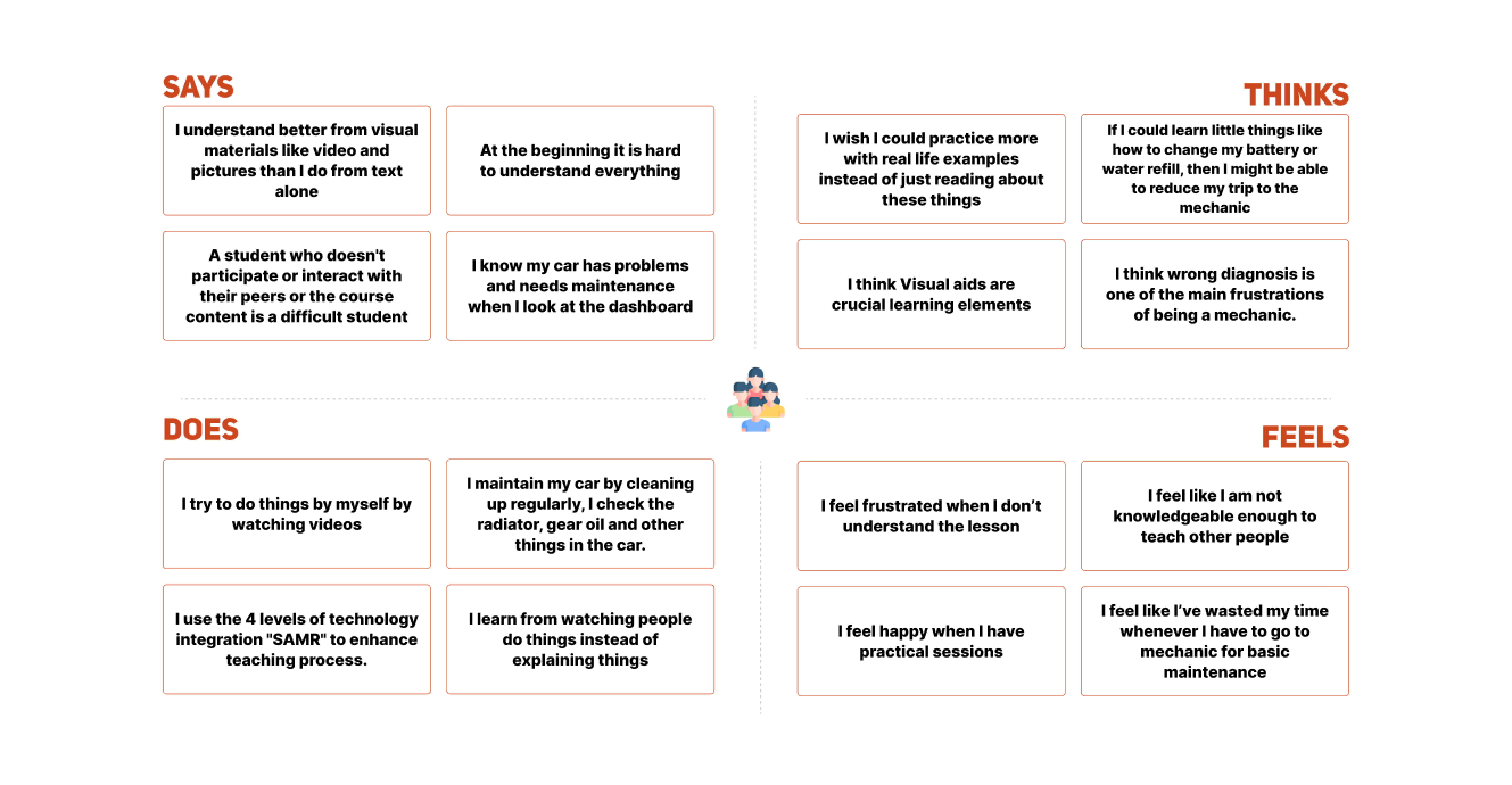
Key realisations
Here are the key realisations and takeaways from the interviews and individuals that was spoken to, which was then categorised into several groups, which include:
01. The eyes have it
Mirror neurons play a huge part in the human learning experience, especially in children. Mimicry is one of the earliest methods of learning we practice.
I learn by observing what others are doing e.g. mechanics
I enjoy the practical sessions more than the theoretic ones
I find it easier to learn by watching people than listening to explanations. I get sleepy when people explain to me.
02. Images over text
The human brain processes images 60,000 times faster than text, and 90% of the information we recieve from the world around us is visual.
I learn better when I watch tutorials on youtube because it allows me to follow step-by-step
I enjoy the practical sessions more than the theoretic ones
I love when lecturers demonstrate whatever they are trying to explain, I usually don't forget afterwards.
03. Cars need attention
It is not enough to just own a car. You have to cater to your car attentively, to get the most out of your experience with it.
I always follow the appointment to maintain my car
Whenever I'm driving I'm always observant and I feel when something is wrong
I know my car has problems and needs maintenance by looking at the lights on the dashboard
04. Confidence overtime
The more people do things and the more tasks people complete, the more self assured and increasingly confident they become.
Finishing things has helped me lose my fear of making mistakes
I didn't have much self belief when I started out, but after a year I'm able to confidently diagnose the car, buy parts and take the engine apart if need be
These days, I only go to the mechanic if I try and can neither find nor fix the problem myself.
Personas
We organized and analyzed the data collected from the interviews, resulting in the creation of personas and scenarios that accurately represent our target users: students, car owners, interns, and engineers.

Bio
Joey is an automotive engineering student in his second year of university, hoping to be a Formula 1 pitstop crewman in the future. Inspired by spending time with his grandad in the garage, he loves the hands-on experience of tweaking and fixing cars. Joey is a good student who knows the importance of theory but gets bored because he is a visual learner.
Needs
Joey needs a more engaging learning experience.
He needs a system that can show more visual elements that he can interact with using the theoretical aspect of his studies.
He wants a practical learning experience as he feels this is the best and quickest way to remember things.
Pain Points
Joey has lost interest so he keeps forgetting most of the things taught in class.

Bio
Francesca, a skilled fashion designer with 5 years of experience, recently received a promotion and a new car as a bonus. While she values her possessions, she struggles with staying on top of car maintenance. As a result, she accidentally burned the top gasket of her car by forgetting to refill the water. Francesca is motivated to learn more about car maintenance and improve her care for her beloved vehicle.
Needs
She needs to understand basic things relating to car maintenance.
She needs to learn little things like how to change her battery or water refill.
Pain Points
She hears people talk about mileage and distance and duration for car servicing but its all confusing and boring to her.
She doesn't know anything about car maintenance so she keeps taking her car to the mechanic whenever she feels something is wrong and sometimes it's just a little issue she could have avoided taking the trip for.

Bio
Robert Karl, a dedicated and curious individual that has a strong passion for automotive and mechanical systems. Fascinated with cars from childhood, he's currently pursuing a degree in mechanical engineering with a focus on automotive technology, which is ideal to start a two-year internship at his dream company.
Needs
Robert needs to enhance his theoretical knowledge by gaining hands-on experience, he wants to apply the concepts he has learned in the classroom to real-world scenarios.
Robert really wants to gain a deep understanding of how vehicle engines function. He wants to understand the inner workings and mechanics of various engine components.
Pain Points
Complex vehicle engine components can be overwhelming, he has challenges translating them into practical application repairs.
Robert doesn't have enough confidence because all he knows the theoretical part, he hasn't had a chance to practice.

Bio
Ella, the dedicated owner of a repair garage for 15 years, has gained a deep understanding of repair and maintenance. However, at 44 years old, the physical demands of the job are becoming more challenging. Despite these growing limitations, Ella remains determined to sustain her business and train young mechanics, sharing her expertise and leaving a lasting impact on the industry.
Needs
She needs to use the latest technologies available to deliver the best solutions.
Ella needs to impart her extensive knowledge to the next generation of automotive mechanics and engineers.
Ella needs to continue doing her job for as long as she physically can.
Pain Points
Her injury limits the amount of time she can spend at the workshop, and how involved she can be in physical activities.
Young mechanics often sign up to learn then spend years and get bored very quickly, it's difficult to keep them engaged or involved in the seemingly less important or less exciting tasks.
How might we?
Delving into user personas and scenarios shed light on key pain points, sparking the pivotal question: How might we transform these challenges and user frustrations into actionable solutions? This inquiry marks the first step towards innovation, guiding us to think about possible solutions.
CHALLENGE
POSSIBLE SOLUTION
Boredom in class when dealing with theory related topics.
Interactive 3D models and game-like elements into the AR training are more engaging.
Complex physical vehicle components without instructions on how to fix them.
Provide a detailed step by step instruction on how to fix different car parts.
Low confidence levels due to lack of practical experience.
Simulate practice activities without the fear of making costly mistakes.
Extensive physical strain limiting efficiency at work
Virtual training resources with practice/challenge modes.
Unavailability of physical vehicle for practical sessions.
Virtual garage within the AR environment for trainees to practice on different vehicles
Information Architecture
After the user research and analysis phase, the application's functions were organized into four categories: learn mode, maintenance mode, freestyle mode, and challenge mode. A hierarchical navigation system was developed to make it easier to explore these features.
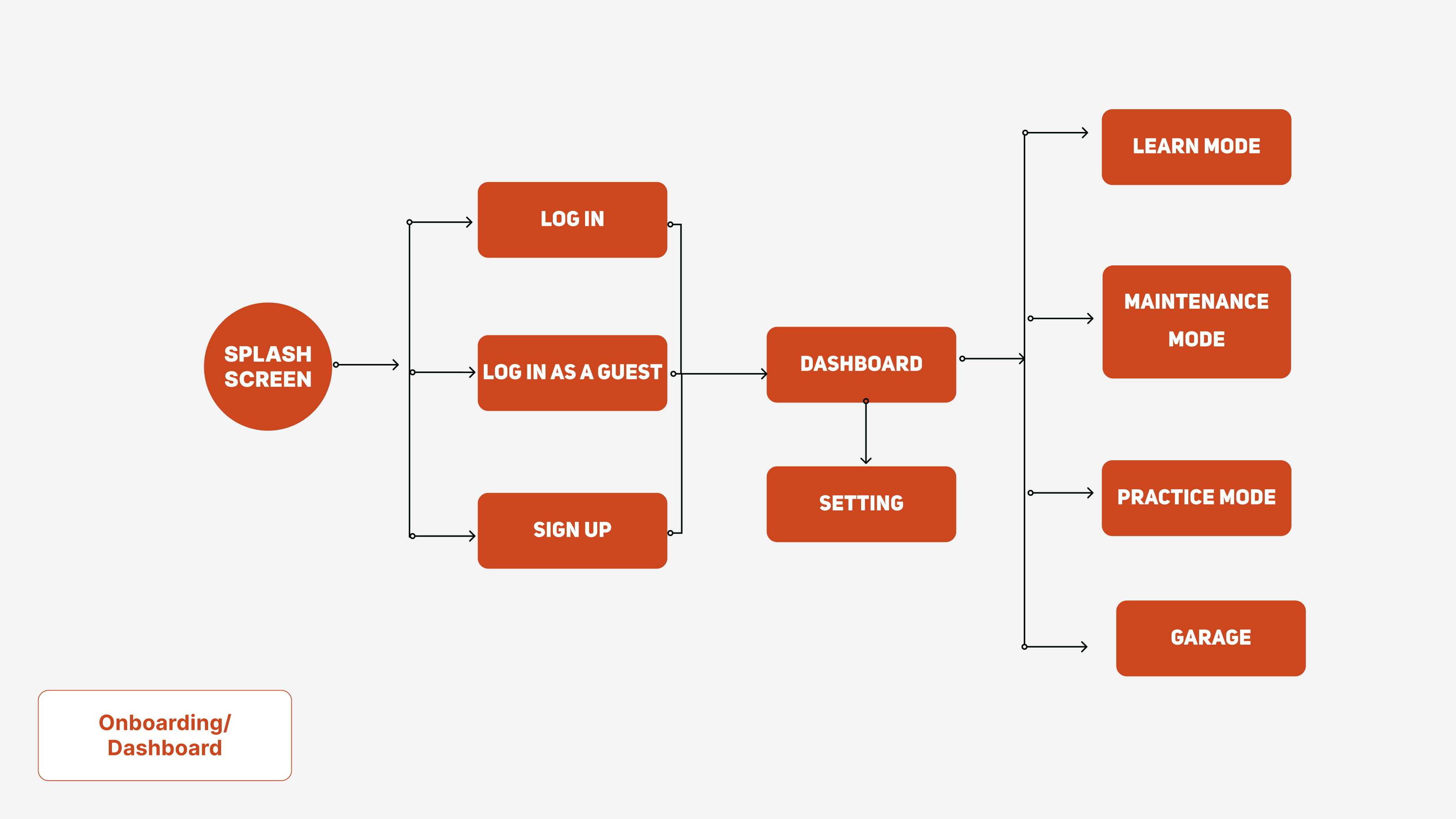
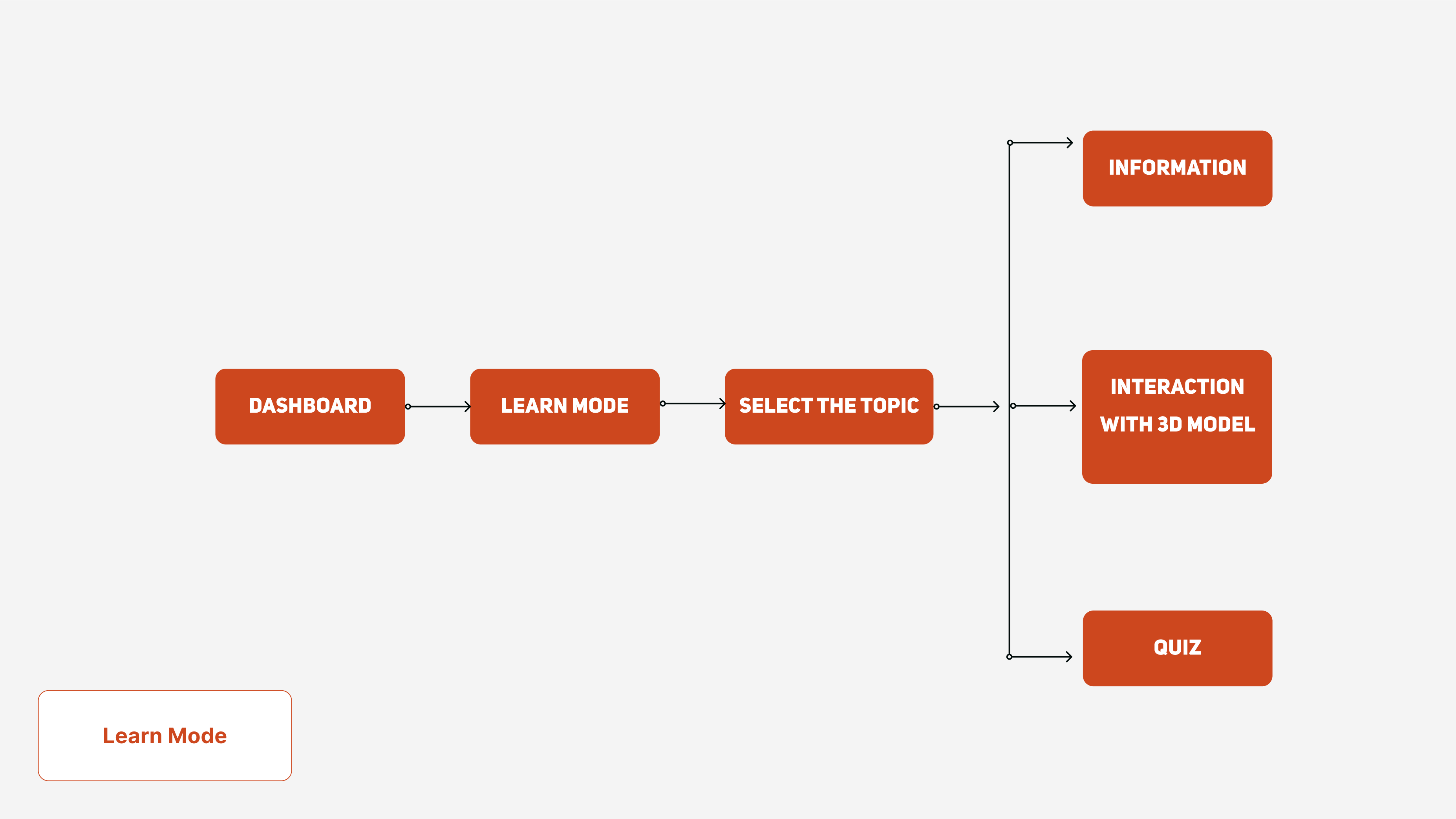
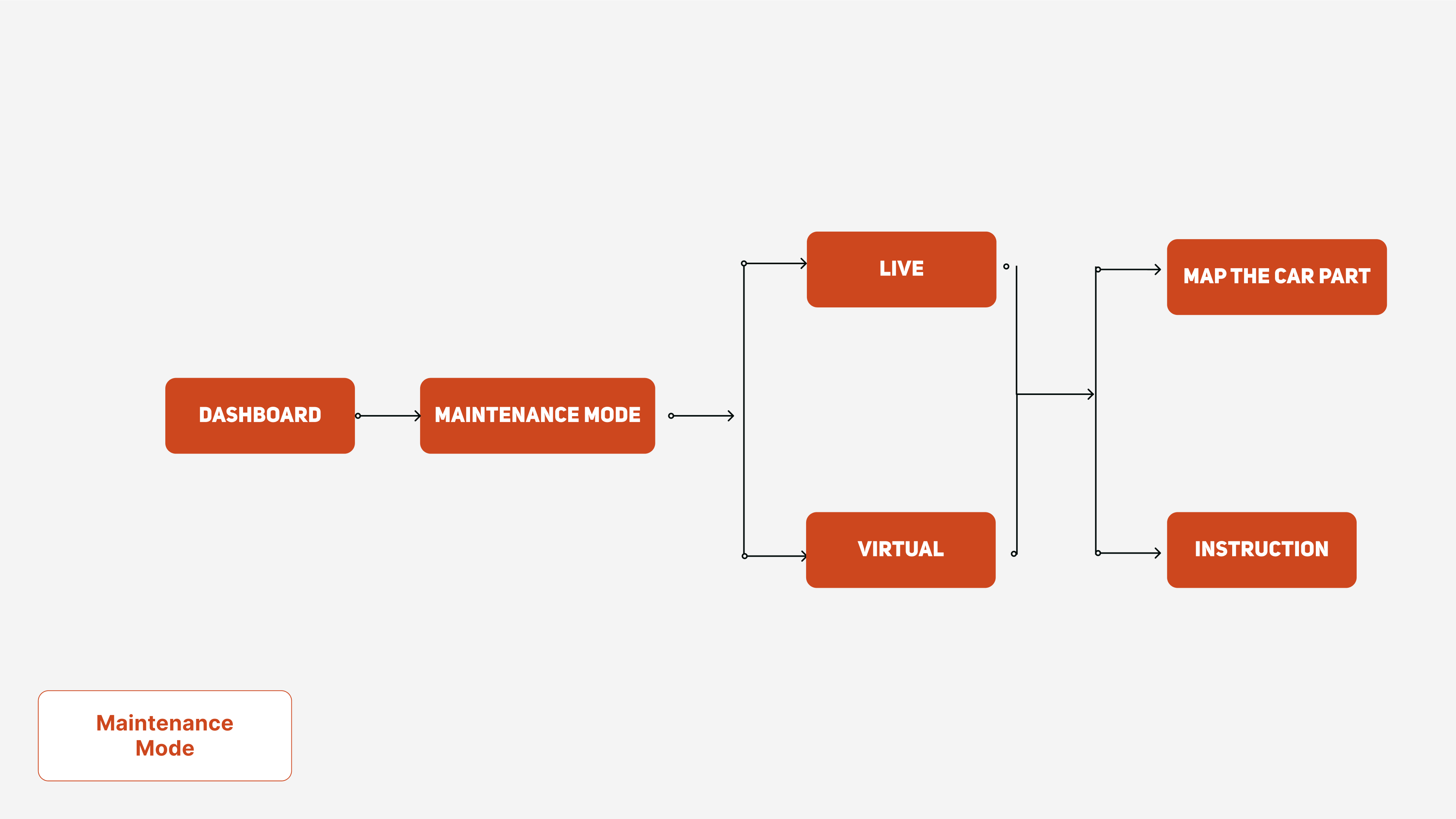
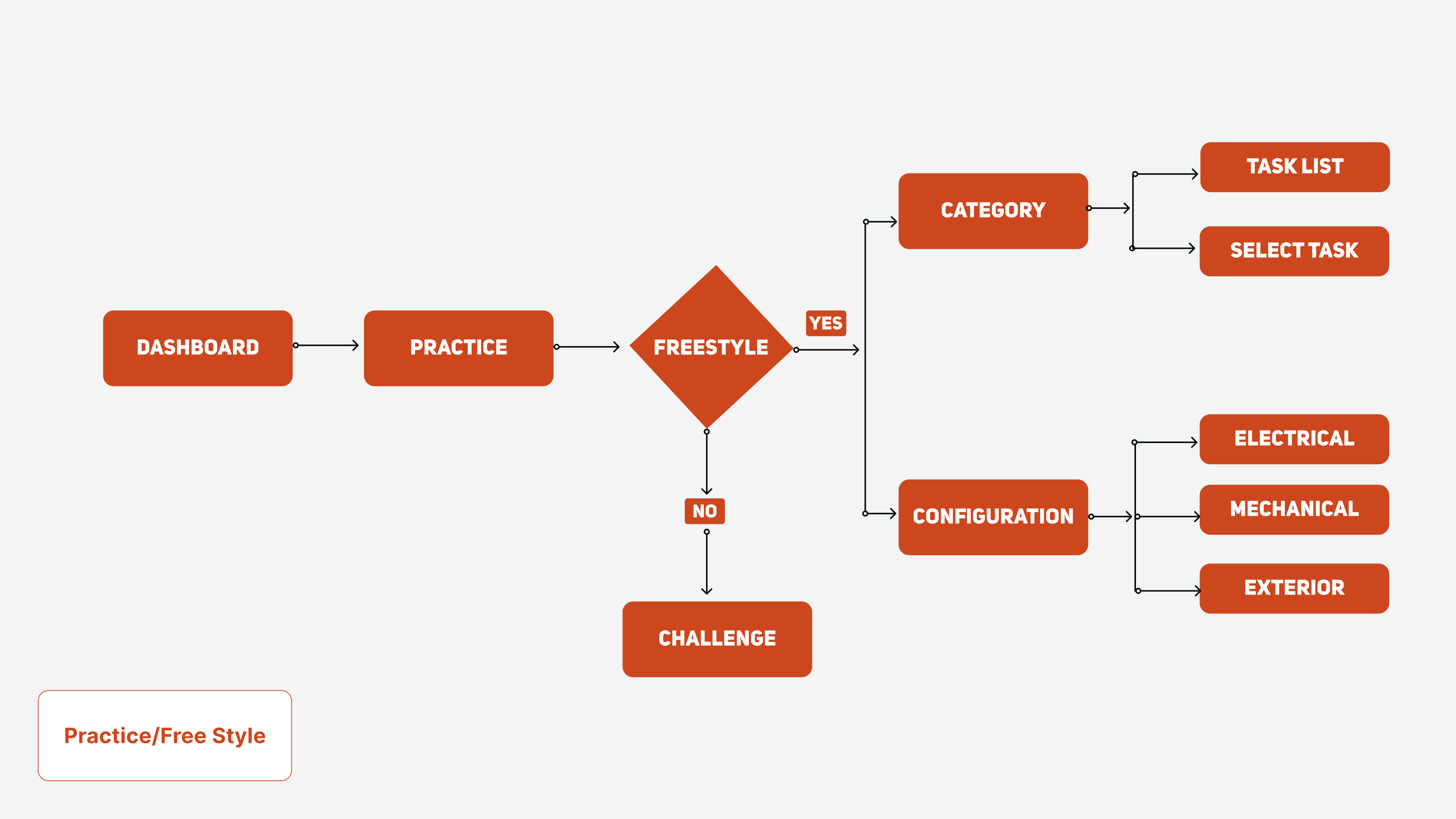
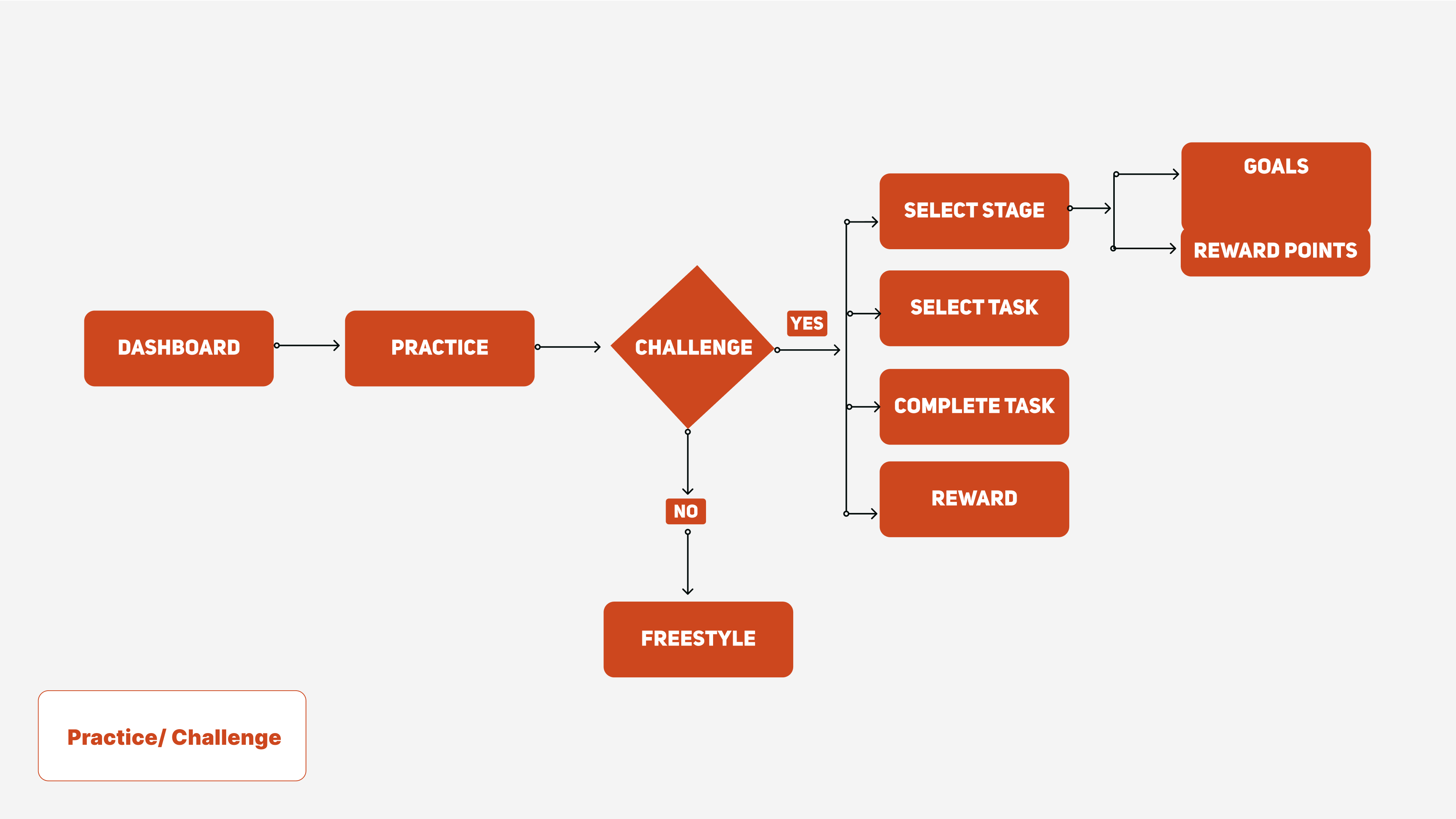
Onboarding Flow
Users begin with sign-up/login, leading to a dashboard that provides access to all main features including learn mode, maintenance mode, and practice mode.
Learning Path
The learning journey progresses from beginner modules through interactive lessons and quizzes, allowing users to select specific car types for focused study.
Maintenance Mode
Provides virtual and interactive maintenance experiences, allowing users to practice repairs and maintenance procedures in a risk-free environment.
Navigation Design
The navigation system is designed to be intuitive and user-friendly, with clear pathways between different modes and features. Users can easily switch between learning, practice, and maintenance activities while maintaining context of their progress.
User Progress Tracking
Progress tracking is integrated throughout the application, allowing users to monitor their advancement in learning modules, maintenance skills, and practical exercises. This helps maintain motivation and provides clear goals for improvement.
Sketches
After mapping out the user journey and structuring the information architecture, we dove into the sketching phase, focusing on bringing ForWheels' key features to life through visual design. ForWheels isn't just an app; it's a revolution in automotive learning, making complex concepts accessible and engaging with augmented reality.
Our approach included immersive simulations, personalized learning paths, a point-based system for motivation, and interactive quizzes to solidify knowledge. Through rapid iteration of our wireframes, we fine-tuned our design to ensure an intuitive, enriching experience that boosts confidence and skill in automobile maintenance.
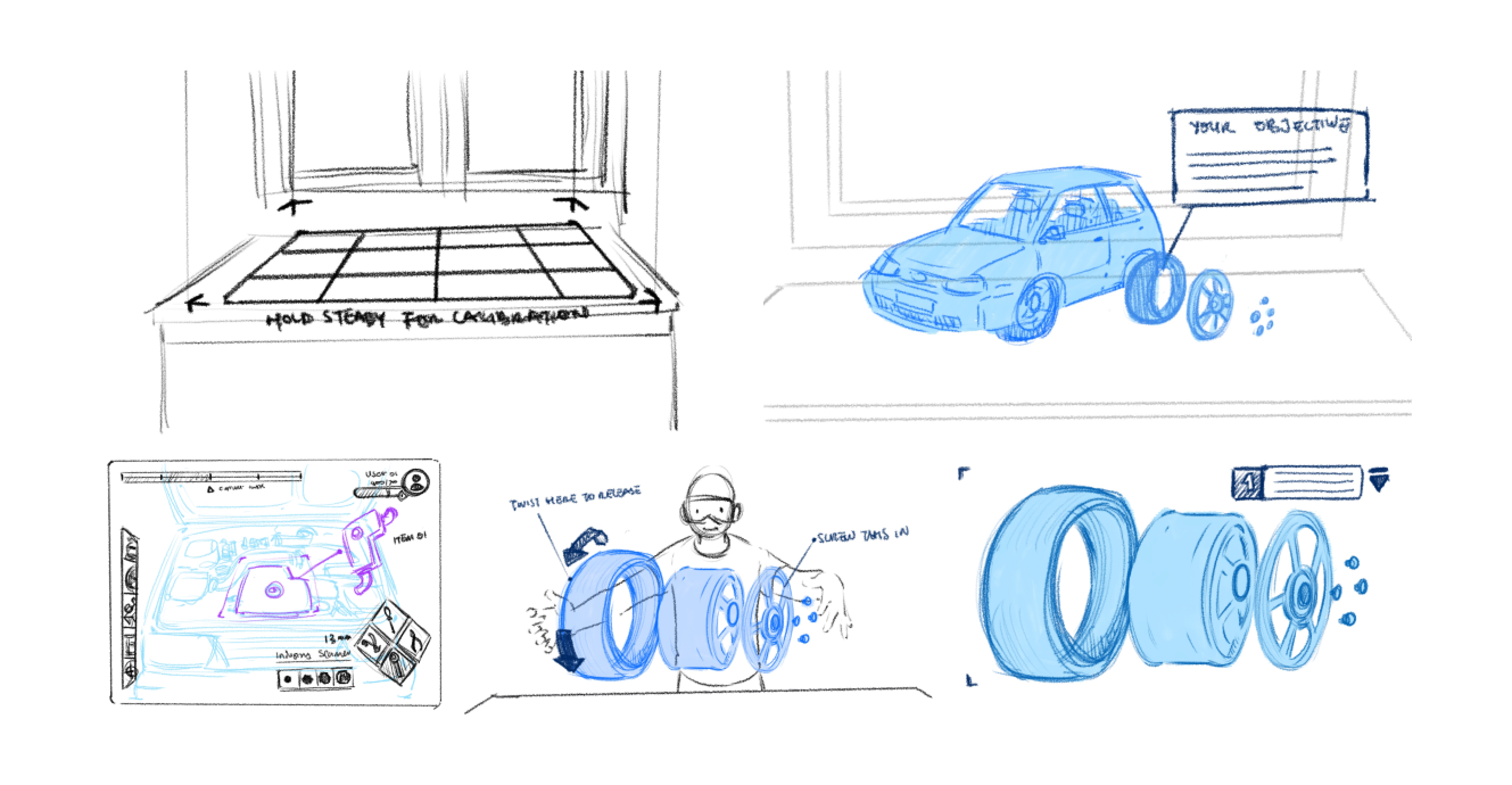

Design System & High-Fidelity Mockups
After establishing the core design principles and information architecture, we developed a comprehensive design system to ensure consistency and accessibility across the application. This was followed by creating high-fidelity mockups that bring the ForWheels experience to life.
Design System
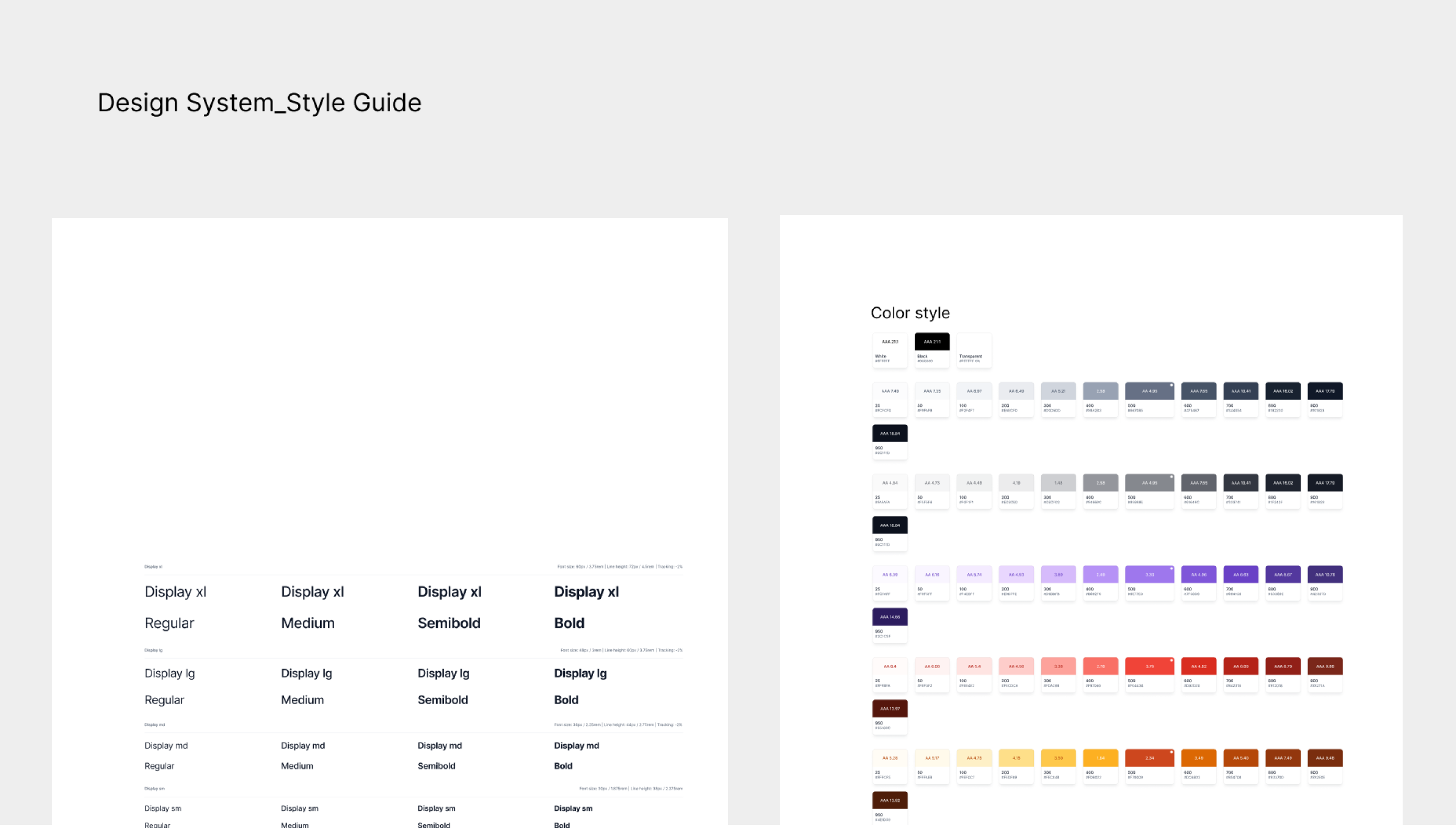
High-Fidelity Mockups
The high-fidelity mockups demonstrate the full range of ForWheels' features, from the intuitive mode selection interface to detailed learning modules and interactive 3D models.
Mode Selection
The main dashboard provides clear access to different learning modes, with visual cues to help users understand each mode's purpose and gamification elements to track progress.
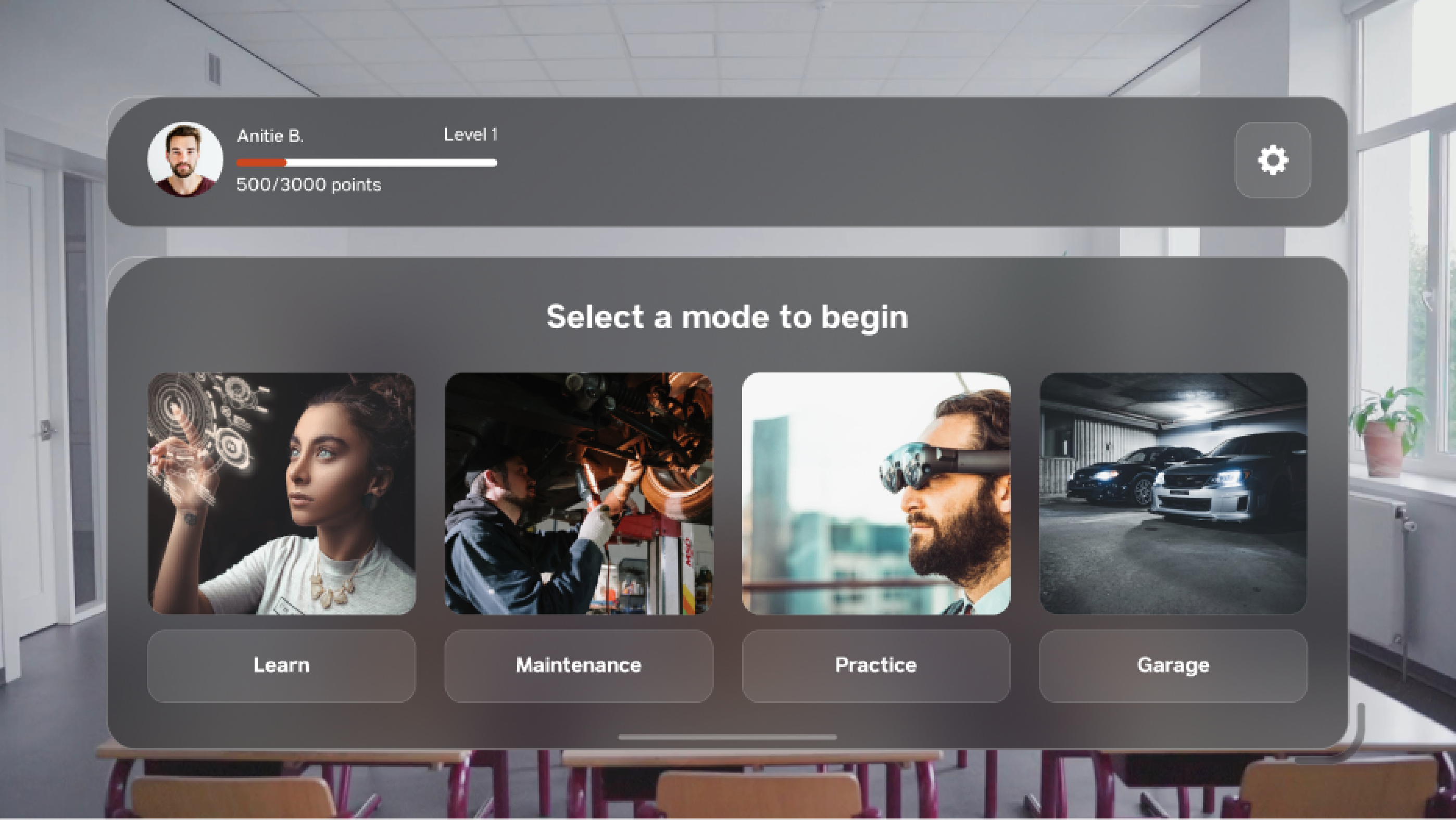
Learning Categories
The learning mode organizes automotive systems into clear, accessible categories with visual representations for each topic.
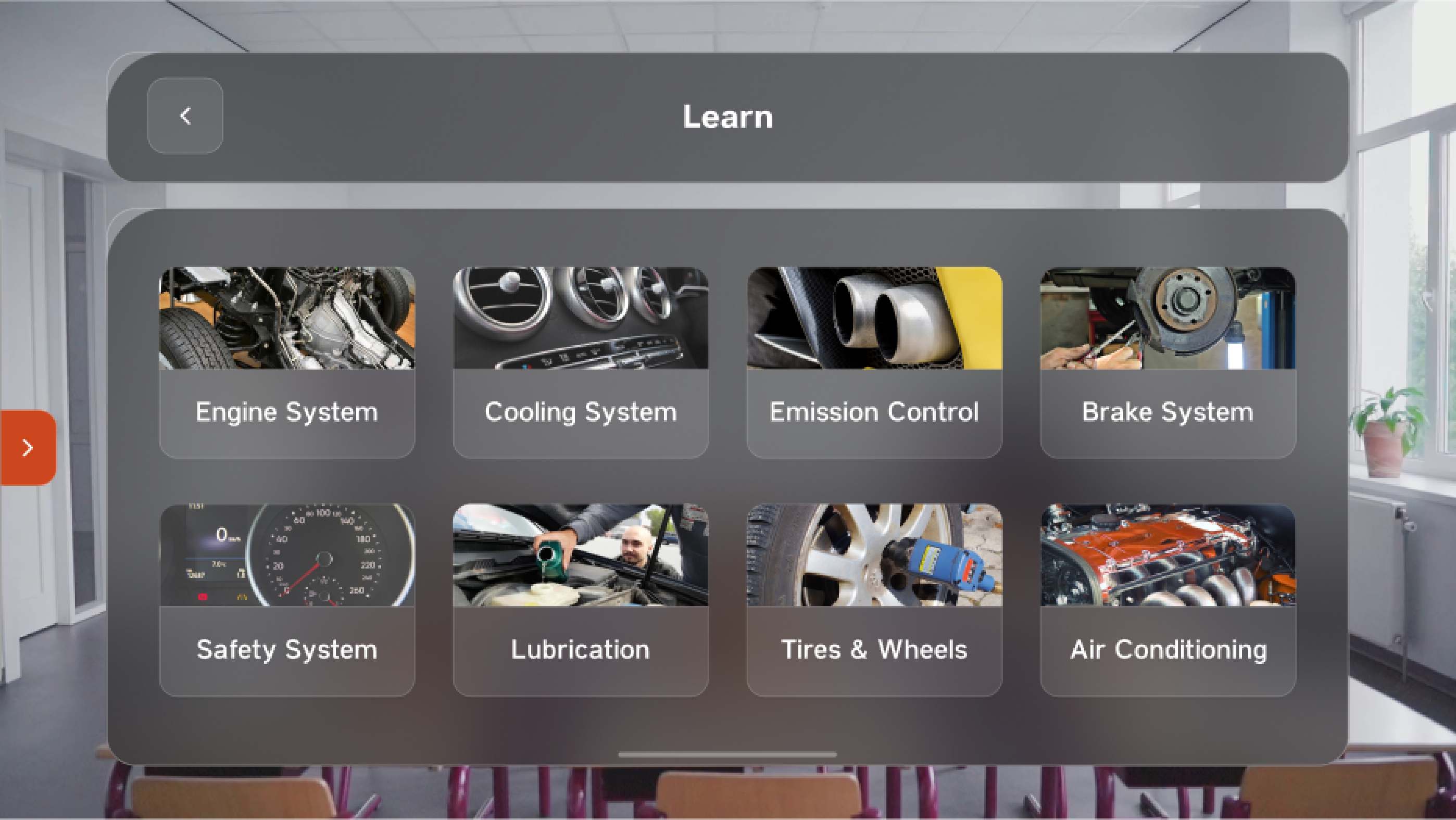
Interactive 3D Models
Users can explore detailed 3D models of vehicles and components, with interactive annotations and educational content. The AR interface allows for both exterior and interior exploration.
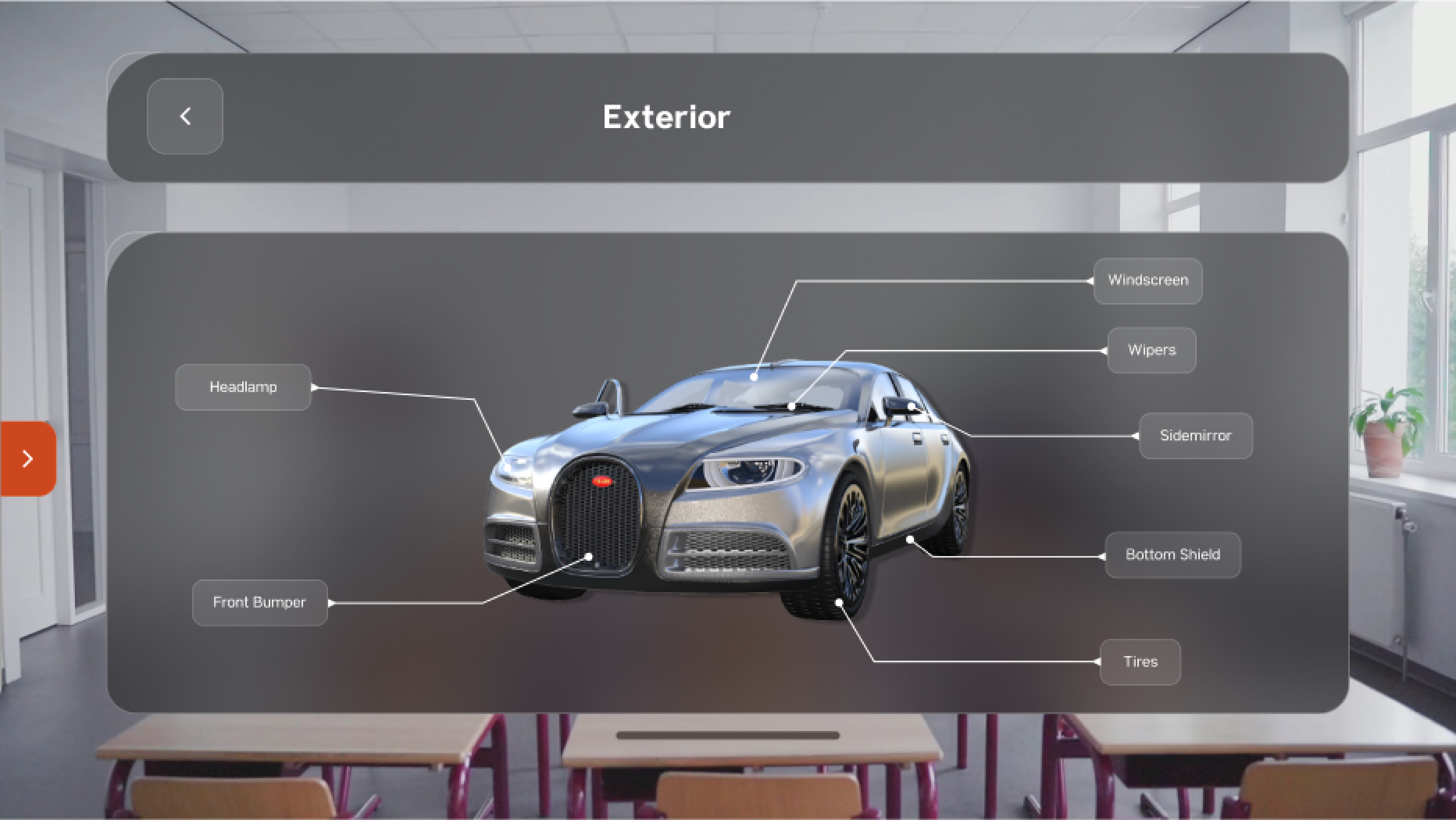
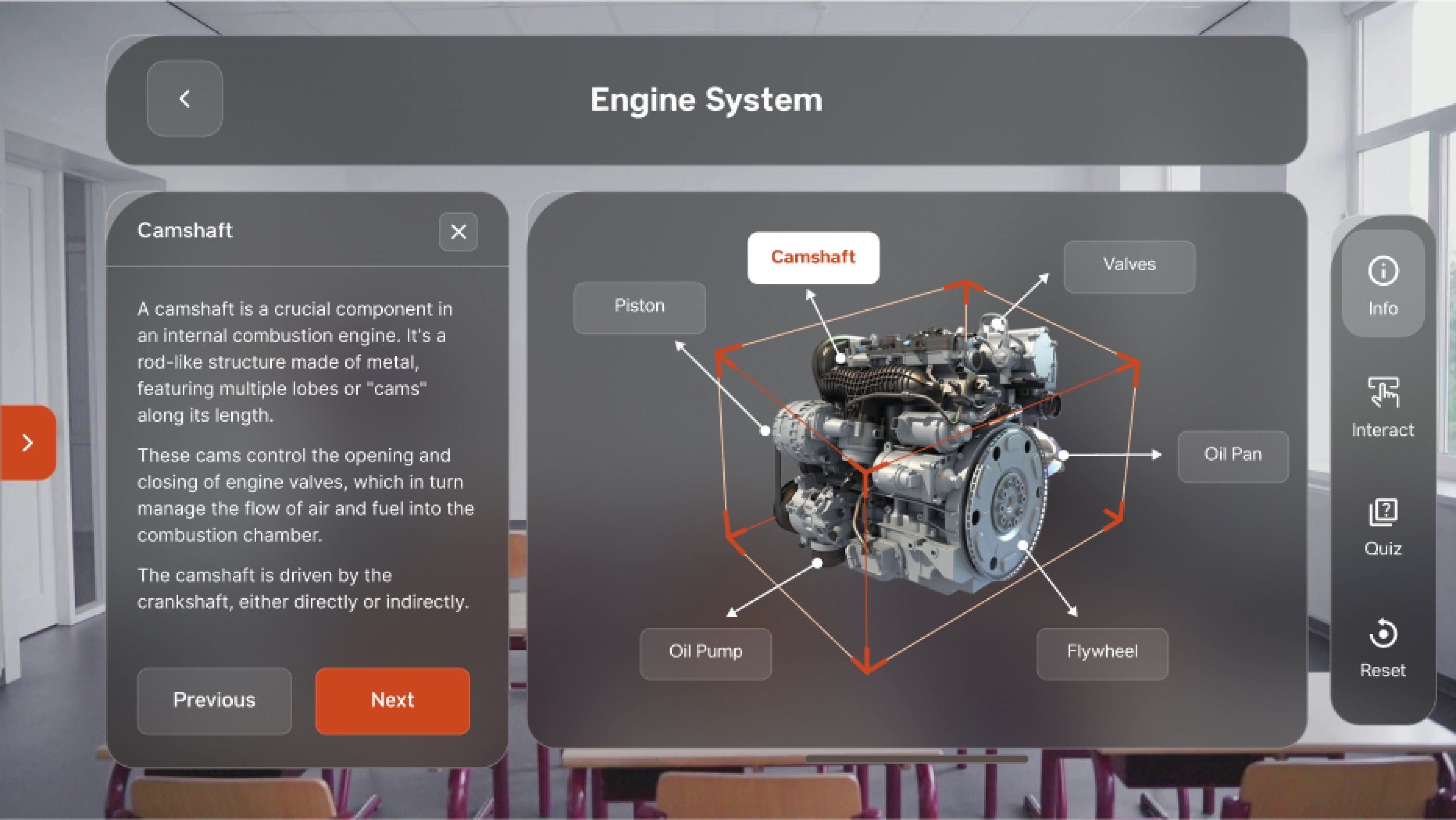
User Testing
We engaged twelve individuals aged 25-45, including students and vehicle owners of various experience levels, to test our augmented reality solution. They performed tasks while evaluating their thoughts using the "think aloud" method, which helped us understand their decision-making process.
Testing Process
The think-aloud protocol highlighted effective features and areas for improvement, insights into users' emotional responses to the ForWheels app were generated through detailed observation.
Key Findings
- Feedback from these sessions led to a reassessment of specific user frustrations, aiming to refine the app for those facing the greatest challenges.
- Initial tests were biased due to administrative assistance and were excluded from the final analysis. The process of technical setup was corrected for future interactions.
- Based on the test outcomes, we've developed recommendations to enhance the app's user-friendliness and accessibility.
Iterations
We assessed all the feedback we got from the users and grouped them based on the constraints we're currently faced with. With this at the top of our list, it was easier to prioritize and decide what our next steps should be.
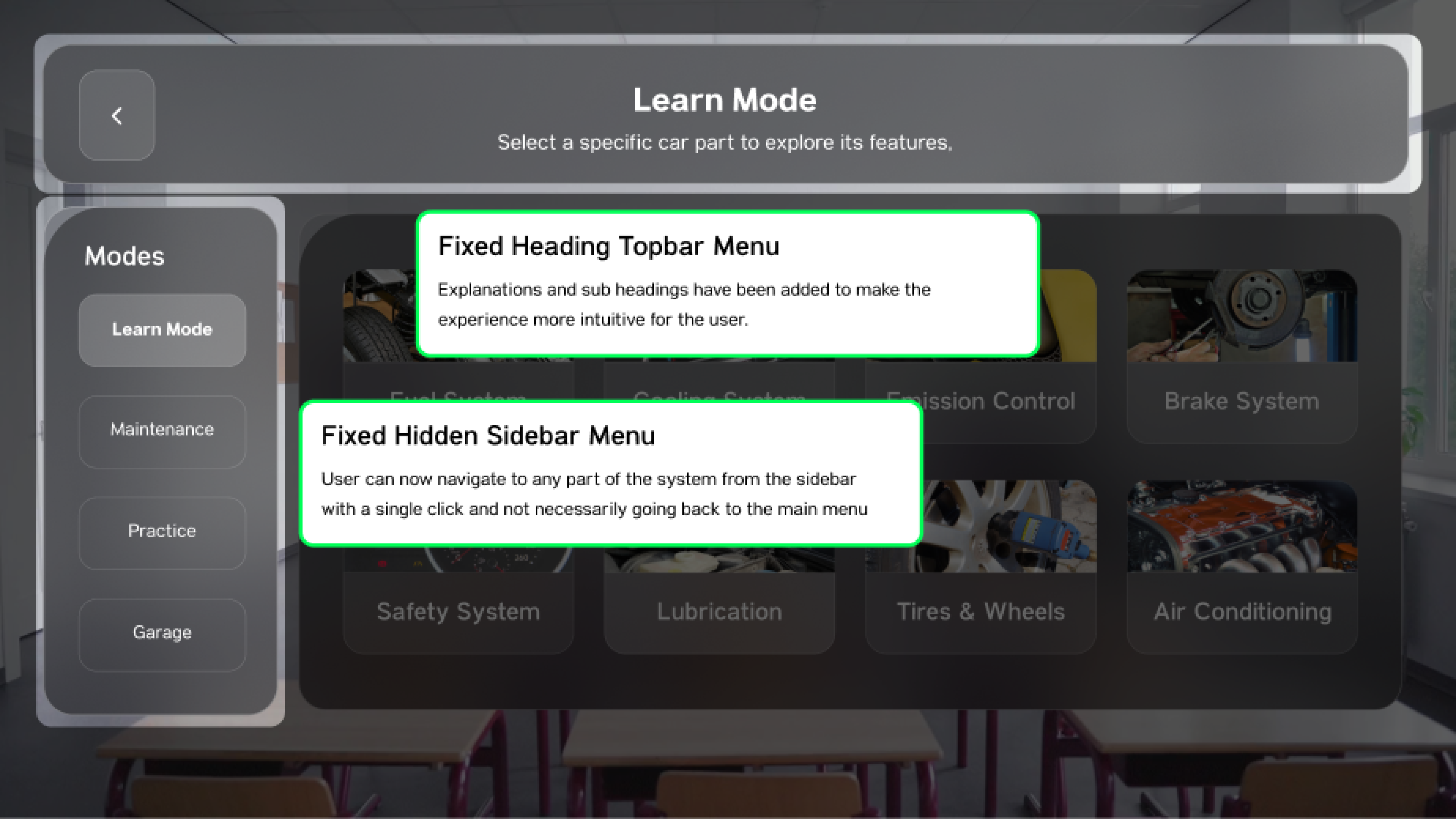
Navigation Improvements
Enhanced user navigation with fixed heading topbar menu and intuitive sidebar navigation, allowing users to access any part of the system with a single click.
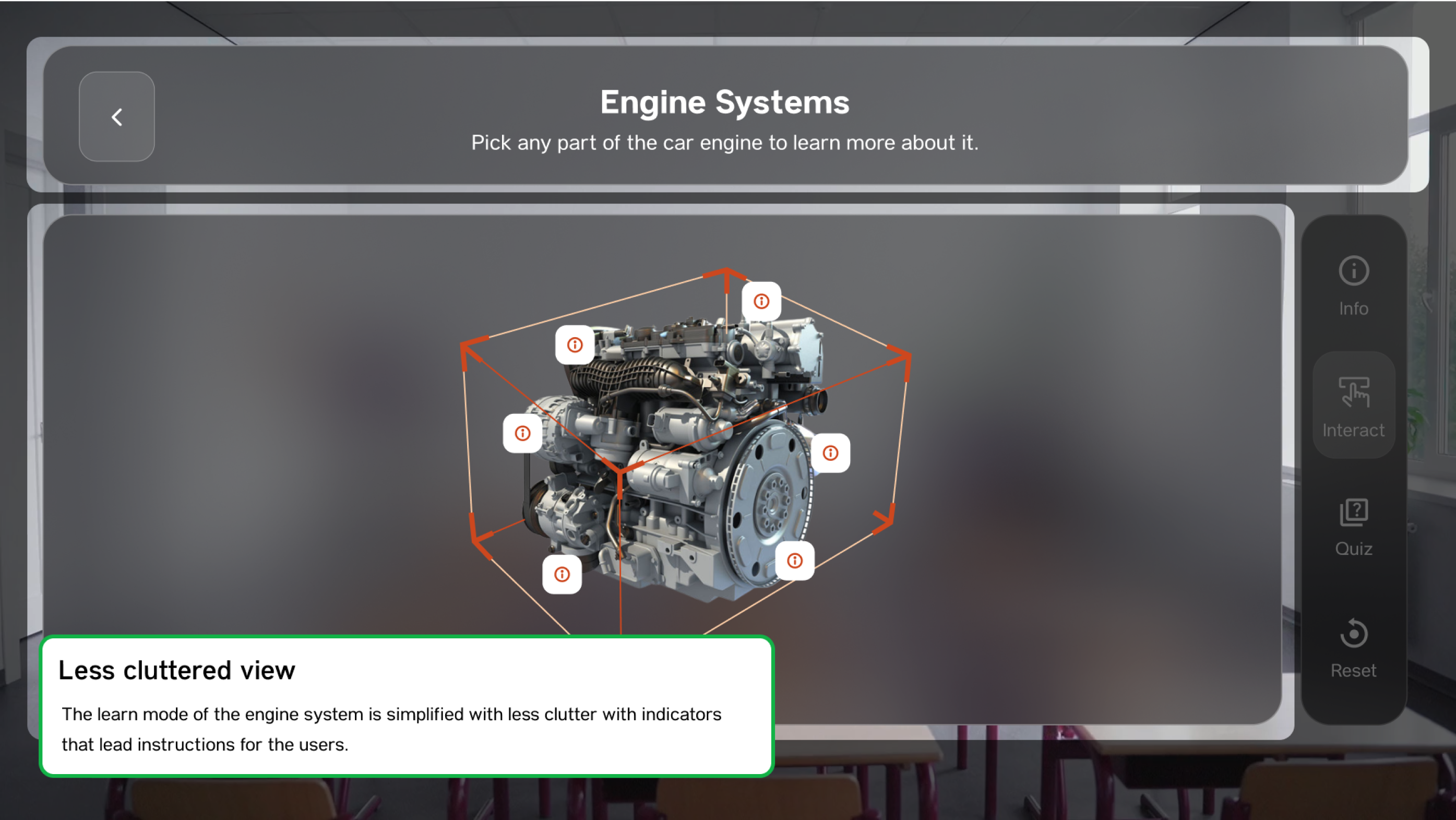
Simplified Engine View
Streamlined engine system interface with reduced visual clutter and clear indicators to guide users through the learning process.
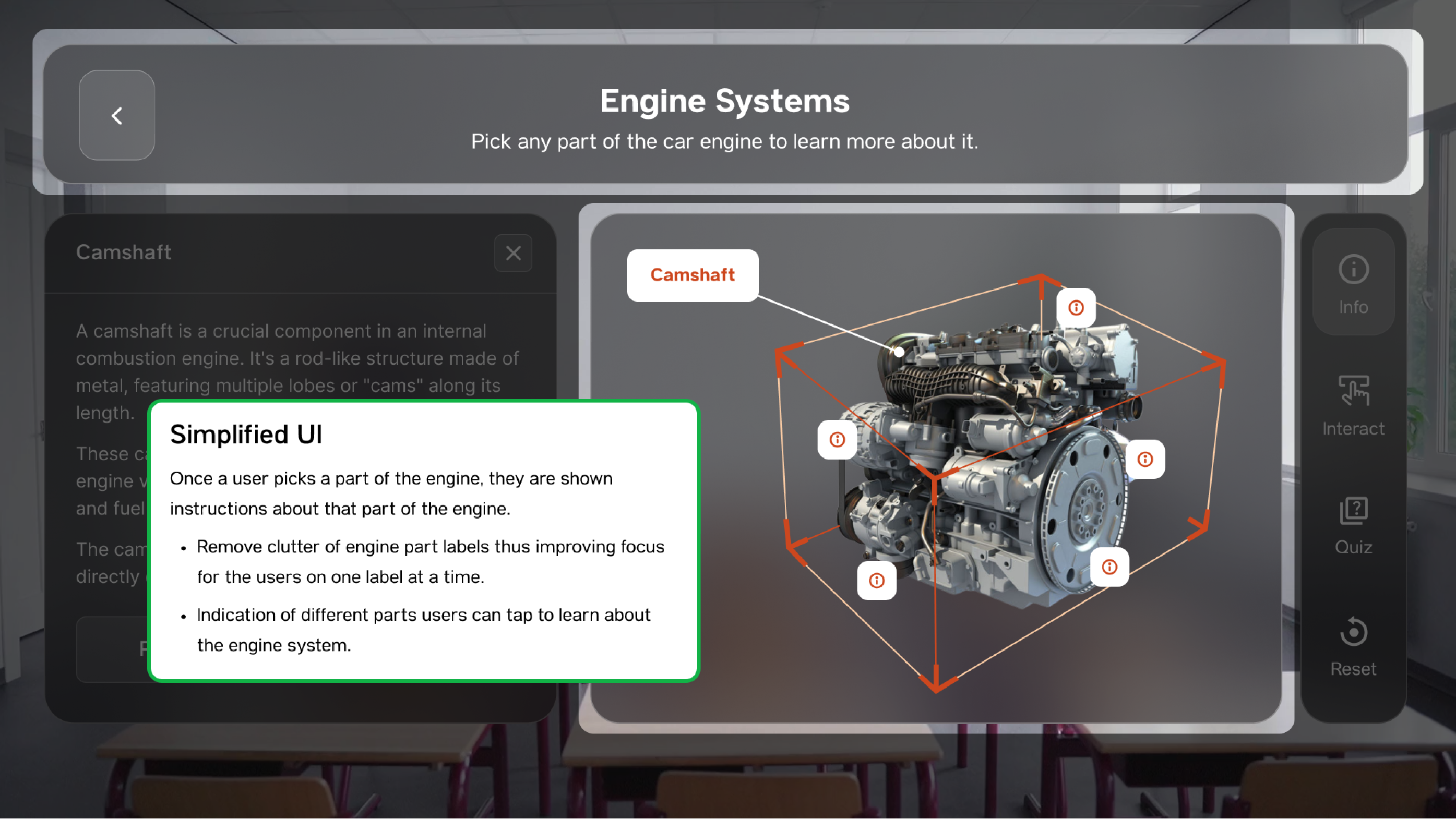
Enhanced Learning Experience
Improved information display with focused content for each engine part, removing unnecessary labels to help users concentrate on one component at a time.
Limitations and Future Consideration
Current Limitations
The application's potential is currently hindered by several limitations including the lack of a feature for collaborative AR use (long-distance) and its heavy reliance on a constant internet connection. Additionally, the limitations of current AR technology mean some complex automotive systems cannot yet be fully represented in 3D.
Future Considerations
Despite these issues, the app aims to enhance user experience by offering services such as connecting to local garages for assistance, vehicle repair diagnostics, and premium accounts that offer other services like home delivery of car parts, hinting at future expansions possibly including features for planes.